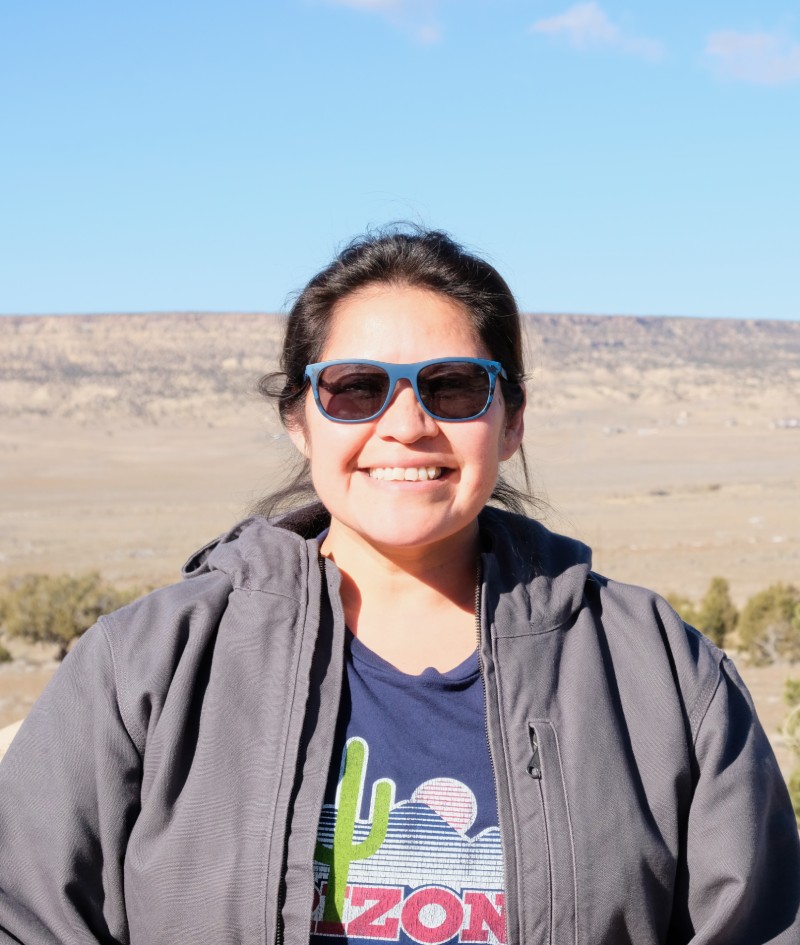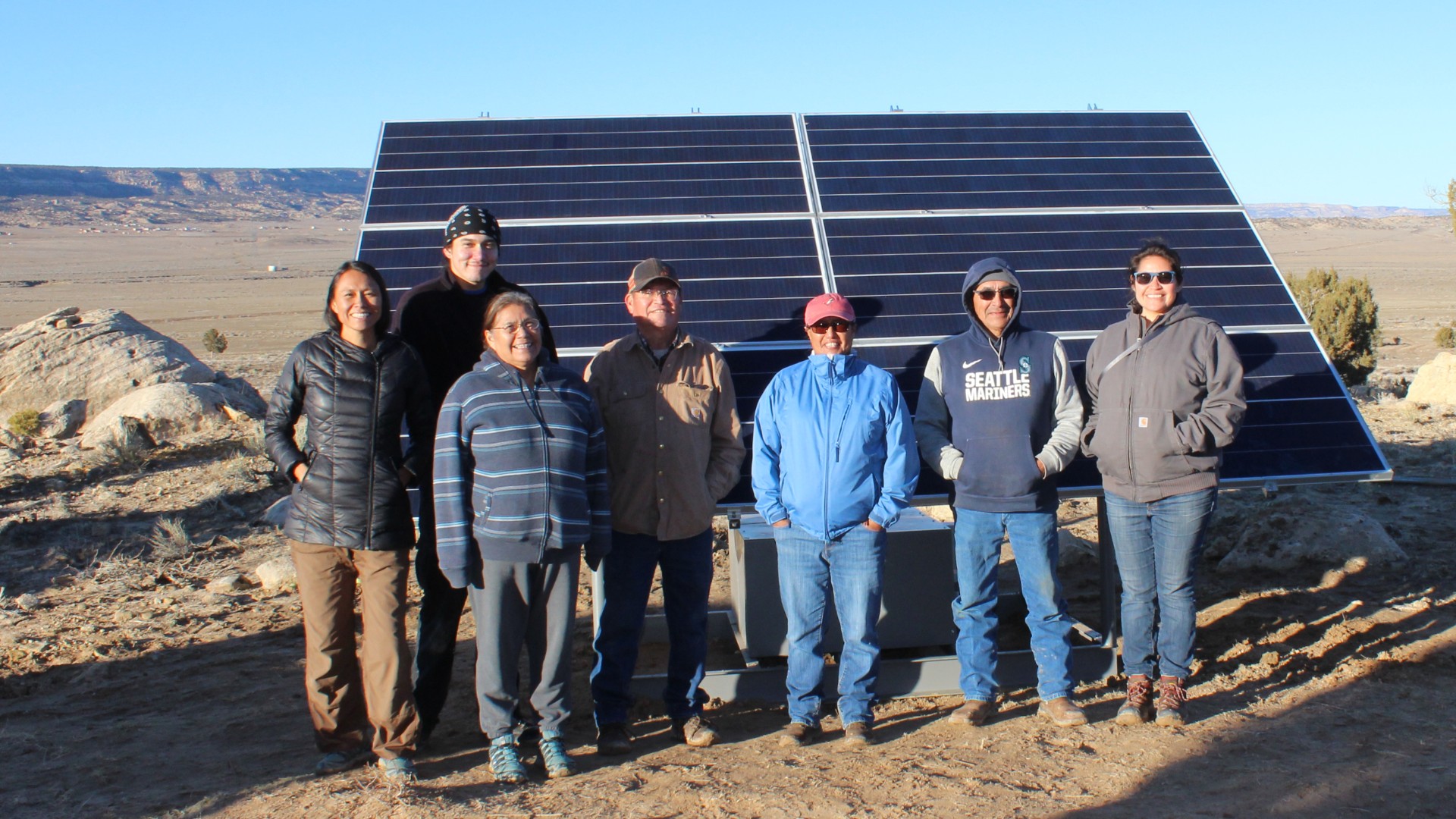There’s something amiss in the Southwest. The region has the best solar potential in the country, yet thousands still live in homes without electricity. The problem is especially acute in native communities like the Navajo Nation, which was passed over in earlier efforts to bring electricity to rural communities.
Suzanne Singer and Wahleah Johns saw this problem as an opportunity. In 2016 they started the organization Native Renewables to help bring power to homes on the Hopi reservation and the Navajo Nation. The project also works to train a local workforce to build, maintain and manage renewable energy systems.
We spoke with Singer, a mechanical engineer and a member of the Navajo tribe, about the promises and hurdles of expanding renewable energy access in native communities.
What made you decide to use your engineering skills to expand renewable energy capabilities for Native American communities?
I started thinking about it when I was a graduate student intern for the Tribal Energy Program at Sandia National Labs. Learning about the amazing things other engineers and other tribes were doing planted a seed in my mind that I could use my capabilities to potentially improve the lives of native people.

Several years later, a chance encounter with Wahleah Johns, our executive director, led to many conversations about our similar passions and ultimately the formation of Native Renewables. We wanted to empower native people to own their power — through education and by using renewable energy — to help solve energy access problems.
One amazing thing about being involved in the STEM (Science, Technology, Engineering, Math) community is meeting other Native American students and professionals who are building their technical skills and looking for an outlet to use those skills in their communities.
What are some of the biggest challenges to scaling renewable energy systems in communities?
In the context of our work, there are more than 15,000 Navajo homes that lack electricity. With a reservation the size of West Virginia, a major challenge of electrification is the cost to provide grid-tied power to every home in rural areas. One potential solution is to provide access to an off-grid photovoltaic system with battery storage that is affordable for low-income families. Our goal is to provide a pathway for families to go solar without introducing a financial burden.
For larger utility-scale, commercial or community projects, the challenges can vary from tribe to tribe. There are 573 federally recognized American Indian and Alaska Native tribes and villages, and even more state-recognized tribes. One challenge can be having the initial capital funding to invest in a project. There can be some environmental hurdles and questions around how the project impacts wildlife, sacred sites and use of lands. With the success of every tribal project, there is motivation to learn from those successes to scale up the number of projects.
What’s most exciting to you about the field of renewables right now?
I’m excited to see the role it plays in tribal energy infrastructure in the next several years — particularly on the Navajo Nation, where the president and vice president recently signed a proclamation in support of renewable energy. Being in the southwestern states of Arizona, New Mexico and Utah, the Navajo Nation is well located to take advantage of the solar resource potential.
What opportunities are you hoping your work creates?
One of the biggest impacts we can make is educating native people of all ages about solar energy. Historically, some energy projects on the reservation involved the donation of photovoltaic systems without much explanation of how to use the system, what maintenance is needed, or what to expect after years of use. Our goal for education and outreach is to expand technical knowledge and to demystify how these systems work. With a better understanding, we hope that owners are able to use the system as intended and have them last the expected lifetime.
For families that want photovoltaic systems, we also want to reduce reliance on fossil fuels needed for lighting or electricity. With the possibility of reliable electricity, we want to improve living standards by allowing students to be able to do their homework at night and increasing the productivity of all family members. I can’t explain how heartwarming it feels to see families turn on a light switch in their homes for the very first time and be excited about the possibilities.
What can the rest of us do to ensure access to reliable and clean energy for Native American communities?
First, it’s important for people to be aware that many Native American communities are at a disadvantage when it comes to energy access, like the tens of thousands of homes on the Navajo Nation that don’t have access to grid-tied electricity or running water. Some communities, like those in Alaska, pay significantly higher costs for their energy. While there is a lot of great work internationally to remedy these issues, we want everyone to understand that lack of access is not just a problem outside our borders.
Second, investing in indigenous communities and organizations doing the groundwork is so important to growing capacity from within the communities. This includes support through donations, volunteering, sharing our work, or continuing political actions that favor renewable energy, workforce development and STEM education.
Third, projects should aim to have strong partnerships with the local communities. As stewards of the land, there is valuable knowledge that exists. Building relationships can take time and transparency, but I think this is the best path to deploying successful projects.
![]()


